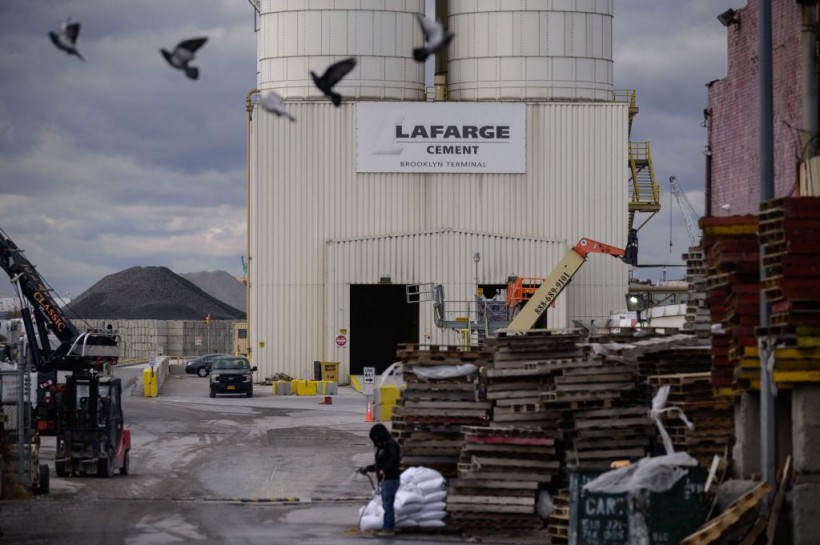Australian scientists have recently created a smart and very effective method of capturing carbon dioxide and eventually converting it to contribute to the decarbonization of certain industries.
A CemNet report specified that the CO2 utilization technology from the RMIT University researchers in Melbourne, Australia, is designed to be easily integrated into the present industrial processes.
This new innovation provides a pathway to quickly transform CO2 as it generated and lock it permanently in a solid form, keeping the carbon dioxide out of the atmosphere.
According to Associate Professor Torben Daeneke, the work developed on an earlier investigational approach that utilized liquid metals as a catalyst.
ALSO READ: Scientists Discover How Coronavirus Uses "Genome Origami" to Infect and Replicate Human Cells

A general view shows a facility of French industrial cement supplier Lafarge, in Brooklyn, New York
Decarbonizing the Steel and Cement Industries
The RMIT University reported that the steel and cement industries are each accountable for roughly seven percent of the total global carbon dioxide emissions, as per the International Energy Agency, with both sectors expected to continue growth over decades ahead, as demand is fueled by growing population and urbanization.
Essentially, technologies used for carbon capture and storage or CCS have largely focused on the compression of gas into a liquid and injecting it underground, although this comes with substantial engineering challenges, not to mention, environmental concerns. CCS, this report also specified, has drawn criticism for being quite expensive, as well as energy-intensive for extensive use.
Daeneke, an Australian Research Council DECRS Fellow explained, the new method provided a sustainable substitute, with the objective of both preventing CO2 emissions and offering value-added carbon reutilization.
He also elaborated that converting or transforming carbon dioxide into a solid object prevents possible problems of leakage. More so, it locks it away both securely and indefinitely.
And, since the process is not using extremely high temperatures, it would be viable to power the reaction using renewable energy.
Harnessing the Power of Liquid Materials
Daeneke, also the co-lead researcher of the study, published in the Energy & Environmental Science journal explained, their new approach "still harnesses the power of liquid metals," although the design has been altered for smoother incorporation into standard industrial procedures.
The co-lead researcher added, the new technology, as well as being simpler to step up, is drastically more effective and can break down CO2 to carbon instantaneously.
A conditional patent application has been filed for the said new technology and scientists have recently signed an agreement worth US$1.86 million with ABR, an Australian environmental technology firm that is commercializing technologies to carbonize both the steel and cement manufacturing industries.
In the research, the next stage is scaling up the "proof-of-concept" to a modularized model similar to the size of a shipping container, in alliance with ABR, an industry partner.
David Ngo, the ABR Project Director said, the RMIT process is transforming a waste product into a core ingredient in "the next generation of cement blends."
Ideally, said Daeneke, the carbon they make could be converted into a "value-added product," adding to the circular economy and allowing the CCS technology to pay for itself over time.
Report about the new technology is shown on RMIT University's YouTube video below:
RELATED ARTICLE: How Sun-Powered Chemistry Can Transform Carbon Dioxide Into Essential Products
Check out more news and information on Carbon Emissions in Science Times.














